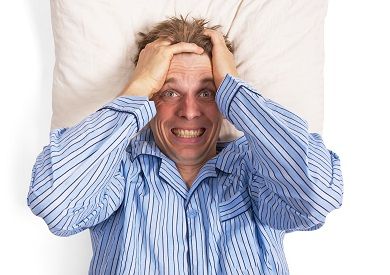Hinman Dental Meeting: What You Need to Know about Sleep Apnea
Dentists have the opportunity to seek out those who are not the typical sleep apnea patients due to the nature of dentistry. After observing the visual symptoms that are typical in a patient with sleep apnea, it only takes a few questions to get to the bottom of a patient’s sleep patterns. At the 2017 Hinman Dental Meeting, Jamison Spencer, D.M.D., M.S., outlined the importance of diagnosing obstructive sleep apnea.

Jamison Spencer, D.M.D., M.S., explained how dentists should be a part of the care continuum for sleep apnea at the 2017 Hinman Dental Meeting.
Do you have trouble sleeping on your back? Do you snore? Have you ever been told that you stop breathing in your sleep? Do you have jaw pain?
These are just some of the questions you should ask a patient whose throat you can’t see into, during a dental exam. Chances are, they may have sleep apnea.
On Friday, March 24, 2017, at the 2017 Hinman Dental Meeting, Jamison Spencer, D.M.D., M.S., gave a lecture titled, “Obstructive Sleep Apnea: Looking Beyond the Teeth and Saving Lives!”
Sleep apnea is defined as the “cessation of ventilation for 10 seconds or more,” while hypoapnea is when a patient exhibits 30 percent to 50 percent “reduction in airflow for 10 seconds or more.” An apnea-hypoapnea index is the “average number of apneas plus hypoapneas per hour of sleep.” An AHI of five events (breathing cessation during sleep) per hour is considered normal.
RELATED: More 2017 Hinman Dental Meeting Coverage
· How to Become a Game Changer in Dentistry
· Make the Right Tech Purchases for Your Practice
· Tips for High-Impact Communication
However, Spencer stressed that this designation does not mean that an individual does not have sleep apnea, rather, that an insurance company will not consider it to be sleep apnea. Having anywhere between five and 15 events an hour is designated as mild, and having 16 to 30 events per hour is moderate. Those with a severe AHI experience 30 events per hour.
“I want to make this super personal, because I hope I inspire all of you to do something after you walk out of here today.”
During his lecture, Spencer talked about his late father’s struggles with sleep apnea. He was “a sleep apnea denier,” he said. At a sleep lab, Spencer’s father was observed while sleeping on his back, something his father did no usually do since it made sleeping more difficult, and exhibited 81 events per hour. Citing a 2008 study titled, “Sleep Disorder Breathing and Mortality: Eighteen-Year Follow-up of the Wisconsin Sleep Cohort,” Dr. Spencer illustrated that sleep apnea can lead to death.
Spencer is also a strong believer in “second-hand sleep apnea,” and believes it may have led to a decline in his mother’s health.
During his presentation he cited a 1999 study from the Mayo Clinic titled, “The Effect of Snoring and Obstructive Sleep Apnea on the Sleep Quality of Bed Partners.” The study researchers analyzed sleep partners of 10 married couples where one partner was being evaluated for suspected OSA.
Of the 10 couples, all patients were male and had an average AHI of 26, ranging between three and 75. During the study period (which lasted only one night), patients “received nasal continuous positive airway pressure,” which eliminated “snoring and obstructive breathing events.” After CPAP administration, AHI fell to an average of seven, ranging between zero and 34 (P < .05). Similarly, whereas the bed partners started out with an average AHI of 21, ranging between 14 and 34, after CPAP administration, AHI had gone down to 12, ranging between four and 27 (P < .07). Thus, the authors concluded that when patients with OSA received proper treatment for their disruptive sleeping patterns, both partners saw a 13 percent improvement in their respective AHI levels.
Story continues on the next page.
Although there is not yet any hard evidence of what Spencer referred to as “second-hand sleep apnea,” he believes that these researchers were “on to something.”
Nevertheless, anyone can have sleep apnea, said Spencer. It’s not just the stereotypical middle-aged, overweight man that physicians are wired to suspect sleep apnea in. This is where the dentist’s role in sleep apnea comes in. If a patient is sitting in your chair with mouth wide open and you can’t see down her or his throat, that’s when you have to start asking questions, said Spencer.
The number one sign of sleep apnea is jaw pain, as a cause of temporomandibular joint disorders. Recent studies have shown individuals with sleep apnea often present with TMJ. In children, two major signs of sleep apnea are bruxism, or grinding of the teeth, and snoring or heavy breathing.
Sleep apnea can cause high blood pressure, heart failure, anxiety, memory problems, sudden death, insulin resistance, among other complications.
ACTIVA BioACTIVE Bulk Flow Marks Pulpdent’s First Major Product Release in 4 Years
December 12th 2024Next-generation bulk-fill dental restorative raises the standard of care for bulk-fill procedures by providing natural remineralization support, while also overcoming current bulk-fill limitations.